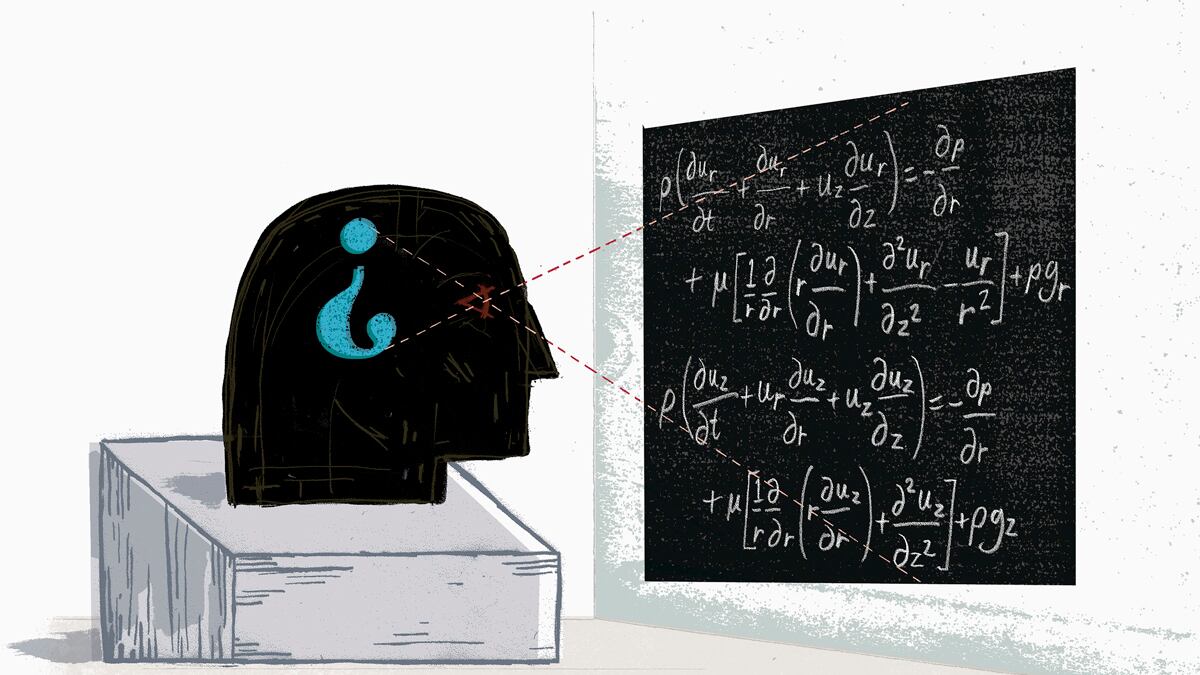In his new book, Ignorance, neuroscientist Stuart Firestein goes where most academics dare not venture. Firestein openly confesses that he and the rest of his field don’t really know that much, relatively speaking. And what’s more, knowing itself, he argues, is highly overrated. Firestein, who is chairman of the biology department at Columbia University, talks to The Daily Beast about the joy of turning our backs on certitude.
The Daily Beast: So, the most obvious question first—ignorance: how did you get into this and decide it was worth writing a whole book about?
Stuart Firestein: I came to the book because I seemed to be being paid for just the opposite: for vomiting out facts all over the place, for just letting out as many facts as possible. Which I guess is what the university’s business model has been for the last thousand years or so. Somehow or other, we know the facts and then we dole them out for some cash in return. That’s how we make it work.
But it occurs to me that in science, that’s not what we really care about. I worked in the lab on neuroscience questions, and I taught a course on neuroscience. And both of them were interesting things to do, but working in the lab was a lot more exciting. So I tried to imagine what it was that was exciting in the lab that wasn’t exciting in the course.
And in my course, I would use one of these neuroscience textbooks—this one that weighs seven and a half pounds, which is twice the weight of the human brain, by the way—to go along with 25 lectures, also chock full of facts, because that’s what I thought I was supposed to do. And I came to the realization at some point several years ago that these kids must actually think we know all there is to know about neuroscience. And that’s the difference. That’s not what we think in the lab. What we think in the lab is, we don’t know bupkis. So I thought well, we should be talking about what we don’t know, not what we know.
One of my favorite quotes in the book is Marie Curie writing this letter to her brother, after she’d gotten her second graduate degree mind you, saying, “Well one never really thinks about what one has done, only what is to be done.” And I thought, that’s what you have to tell students.

Right. In other words, by delineating what’s still unknown.
As I began to think about it, I realized that, contrary to popular view, scientists don’t really care that much about facts. We recognize that facts are the most unreliable part of the whole operation. They don’t last, they’re always under revision. Whatever fact you seemed to have uncovered is likely to be revised by the next generation. That’s the difference between science and many other endeavors. Science revels in revision. For science, revision is a victory. In religion, or astrology, or any other belief system, revision is a kind of defeat. You were supposed to have known the answer to this. But the joy of science is that it’s about revision.
That phrase you just used—“the joy of science”—for the layperson, that may be a contradiction in terms. Do scientists implicitly understand the idea of reveling in revision?
Oh, yeah. There’s no pleasure quite as indulgent for a scientist as being able to write a paper that says, “So and so was wrong.” I even get a pleasure out of writing "Firestein was wrong when he said this 10 years ago." In science, every answer begets 10 new questions. And that’s what keeps it going.
So what gets lost in translation between the joy of the process in the field and the way that people look at science from the outside?
I wish I knew the exact answer to it. But part of it is that people don’t like ambiguity. They don’t like to hear "We don’t know." And scientists pick up on that, and don’t like to say “We don’t know.” So, when the press comes calling, or when it comes to time to write a textbook—I mean, how many textbooks are you going to sell if you write at the end of every paragraph, “but we don’t really know too much about this.” And how many times are they going to come back and interview you if every time you just say, "Yeah, that’s a great question. I wish I knew the answer."
In the book, I talk about this idea of “negative capability,” which is a phrase the poet John Keats thought up as a literary state of mind, but I would say it’s a scientific state of mind, too. It’s the ability to remain in mysteries and unknowns without any irritable reaching or grasping. But people don’t like that, generally. They’d rather not be in doubt. Is it this or is it that? Is the world warming up or isn’t it? But in the end, the only sensible way to get into science, to be able to be a citizen of it, is to stay on the ignorance side of it, to stay on the questions. We can all understand the questions.

To go back to the point you just made about jargon—one thing that’s so striking about this book is that it’s not written in an academically phrased or veiled voice. Why do you think that talking in terms of questions and ignorance lends itself to that kind of aliveness?
That’s just been my experience of it. The book started as a class, a class that I still run here at the university. The class consists of having some scientists from whatever field come in and talk to us for two hours about what they don’t know. When I first started the class, I only had biologists come in because I figured, well, I don’t know if this is going to work or not, and at least if it’s biologists, I’ll figure out how to fix it. But it worked out pretty well, and I got more adventurous. I invited a couple of physicists. And little by little, I began to find that I could have physicists, or chemists, or even mathematicians.
In academics, what you get paid for, what you get tenure for is research. These undergraduates are paying small fortunes to come and be taught by professors who don’t put that much time into teaching because in the end they know they’re not being evaluated based on their ability to teach—they’re going to be evaluated based on their research. That sounds terrible on its surface, and it’s not all good. But it’s not all bad. It comes from a good idea, which is that the best people to teach are the people who are doing. Especially in science. You want active scholars doing the teaching. But then don’t have them teach facts. Because the value of having an active researcher teaching is that they’re immersed in the puzzle, they’re immersed in the process. So that’s what they should be teaching.
But somehow or other, it’s easier to teach the facts, and since you don’t get credit for teaching, you just wind up teaching the facts. And the MCATS are there, or the LSATS or whatever, and they just want to know how many facts the students have. There’s pressure on you to not spend a lot of time on teaching because it will just get in the way of your research and there’s further pressure to have your teaching be fact oriented because that’s what your students are going to be tested on.
The deck is stacked.
Yes. From the top, all the way through.
So what would teaching the process look like in practice? What does that actually mean?
That’s the $64,000 question. It’s the trickiest thing to do. Of course you have to teach a certain number of facts. Students come, they want to be filled up a little, you need to teach them some things to go on with. So, they have a textbook. I think they should read the textbook. The facts are in the textbook. But we never talk about failures, and we should talk about them all the time. We never talk about the things in neuroscience that were dead ends, that didn’t pan out.
What’s a famous example of something that didn’t pan out?
We’ve made some terrible mistakes in identifying the really important questions in neuroscience. So for example we love sensory systems. People have used sensory systems as the way into the brain, because why not, they’re cool! We all like to look at a pretty face or taste good food or good wine or whatever. So sensory systems are aesthetic. They’re pleasing. Whereas the motor system—moving around—it sounds like some vocational activity. It sounds like something you go to auto-mechanic school for. But in point of fact, it now seems actually that all that fancy perceiving and thinking is not so difficult. And what really is difficult is the motor system. There’s a fellow in Cambridge, Daniel Wolper, who points out regularly in his talks that IBM has this computer, Big Blue, which has managed to beat Gary Kasparov in chess, but they don’t have a computer yet with a robotic arm that can move a chess piece from here to there as well as a 3-year-old child.
We’ve been off chasing down things that maybe were not as important as we thought they were, and have failed to see things that are more important. There are many, many cases of that and we should teach some of them. We don’t teach it as science. We don’t show the science and say, “But look how this could go down the wrong road.”
That would be so much more exciting.
Whenever I teach neuroscience, I dump the facts out, but I try to tie it to some experiment, whatever it was. It’s always more engaging for a student when you talk about the experiment, because there’s a narrative to it. It’s not just a fact. It’s a discovery.
THIS INTERVIEW HAS BEEN EDITED AND CONDENSED






